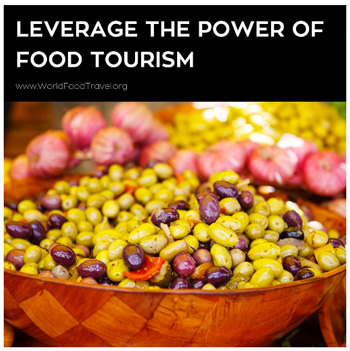Leverage the Power of Food Tourism: Food is the Glue
Guest article by Erik Wolf, Executive Director, World Food Travel Association
In the nearly 20 years of championing food tourism (a.k.a. culinary tourism or gastronomy tourism) industry, you can imagine that we have noticed many things.
One thing we continue to notice, and which we don’t understand, is when destinations regard their food and beverage products and experiences as either something to look at in a museum or something to be put on a shelf because it looks nice. And it should definitely be Instagrammable, right? Really, an area’s food and beverage industry is the glue that holds together the rest of the visitor’s experience.
 Food-loving travelers are not “those people” who we politely poke fun at because “they” are obsessed with food. Our 2016 Food Travel Monitor research proved that food-loving travelers (and by extension, beverage-lovers) comprise 93% of all travelers today. In other words, almost every traveler is a food- (and beverage-) loving traveler. Destinations that treat their food and drink products and experiences separately from other tourism activities may actually be doing themselves a disservice.
Food-loving travelers are not “those people” who we politely poke fun at because “they” are obsessed with food. Our 2016 Food Travel Monitor research proved that food-loving travelers (and by extension, beverage-lovers) comprise 93% of all travelers today. In other words, almost every traveler is a food- (and beverage-) loving traveler. Destinations that treat their food and drink products and experiences separately from other tourism activities may actually be doing themselves a disservice.
We believe that food and beverage should serve as the foundation of every destination’s overall marketing strategy. Food and drink itself—which includes all kinds of products and experiences — is the foundation of every traveler’s overall impression of your destination.
Visitors eat three times per day, every day, day after day after day. Even the most enthusiastic travelers do not visit museums or attend cultural events that often. Travelers who stay in a destination for 7 days will have as few as 21 different food or beverage experiences. That equates to 3 per day for 7 days, not including snacks or late night drinks. Compare those 21 impressions to the 1 or 2 museums that the same traveler might visit during those 7 days. We see those 21 impressions as 21 new memories that can be created. We know that food and beverage make a longer-lasting impression on people than other activities because all five human senses are involved. So what’s the takeaway? If you want people to leave with great memories of a destination, make sure they eat well — really well — while they are there. Have you heard the expression that the way to someone’s heart is through their stomach? Well, it’s true.
What does “eating and drinking well” mean to a traveler? Street food? Michelin stars? Local ingredients? Big portions? Lots of ale? Home cooking? That takes us back to our 13 PsychoCulinary profiles, but that’s a topic for another day.
Destinations and businesses need to regard their food and beverage industry as the glue that holds together every other part of the visitor’s tourism experience.
How does your destination or business regard your area’s food and drink?

